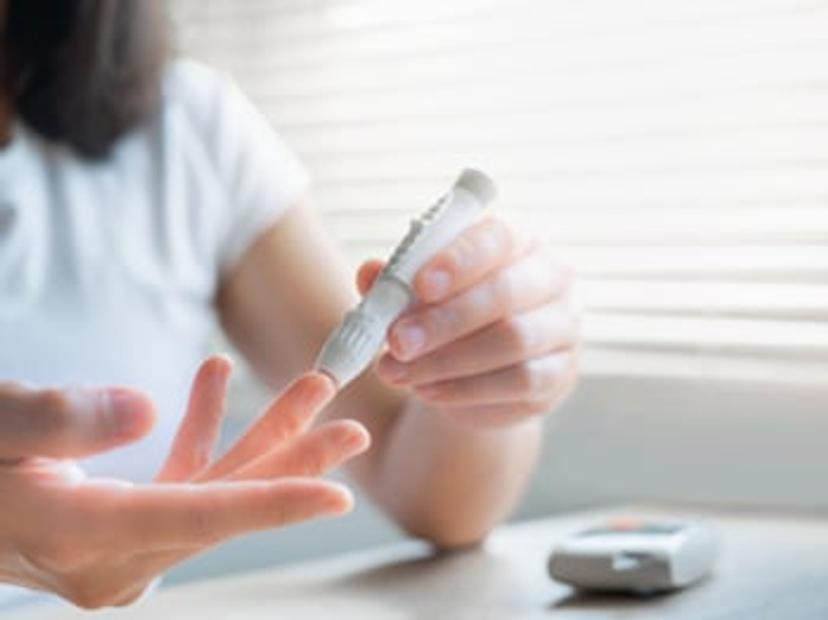Microsampling redefines patient-centric approaches to bioanalysis
PPD Laboratory services embraces microsampling for enhanced client and patient benefits
4 Dec 2023
Drug development is undergoing a metamorphosis with an increasing focus on personalized medicine and patient empowerment. Traditional methods of sample collection for monitoring therapeutic drug levels in patients can be invasive, requiring large volumes of blood. However, innovative techniques like microsampling offer a convenient alternative to traditional sampling techniques, helping to overcome practical problems and offering less invasive options to patients.
Dr. Melissa Mofikoya, Associate Director – Bioanalytical R&D of the PPD clinical research business of Thermo Fisher Scientific oversees the R&D group at the Middleton, Wisconsin, bioanalytical laboratory. Mofikoya’s team develops and validates methods that are used to support regulated bioanalysis for clients' drug development programs. In this article, Mofikoya discusses the benefits of implementing microsampling in bioanalytical testing and explains how access to microsampling techniques allows PPD Laboratory services to adapt to evolving client and patient needs.
The importance of a patient-centric approach to drug development
Health authorities and biopharmaceutical organizations have widely acknowledged the significance of patient centricity. They have developed tools, guidelines, and methodologies to integrate patient input into the clinical phase of development. Moreover, it is essential to recognize that patient-centric development should encompass all aspects of product development, including chemistry, manufacturing, and control (CMC), ensuring a holistic approach that prioritizes patient needs1.
“Having a patient-centric approach is more than just the management of medication. It focuses on improving a patient's overall experience. This means pushing beyond the normal, conventional standard practice and consciously searching for improvements that are less invasive and less disruptive to a patient's daily life,” says Mofikoya. “Microsampling can be integrated into a patient-centric approach. For example, if a patient needs to routinely have blood drawn to monitor for therapeutic levels, microsampling could potentially allow for them to do that sampling at home instead of disrupting their daily schedule and requiring them to make visits to a clinical setting.”
Advantages and current hurdles of microsampling
If a patient needs to routinely have blood drawn to monitor for therapeutic levels, microsampling could potentially allow for them to do that sampling at home instead of disrupting their daily schedule.
Dr. Melissa Mofikoya
PPD clinical research business, Thermo Fisher Scientific
Microsampling boasts several advantages, such as smaller sample volumes suitable for pediatric patients, greater flexibility in sample collection, and the ability to ship and store samples at room temperature. Whilst the benefits of microsampling are many, some challenges have hampered its implementation. “On the patient side, microsampling would include the need for training for at-home collection. There is also a need for additional training of laboratory staff to be able to process samples from microsampling devices such as capillaries, dry blood spot cards, or different volumetric absorptive microsampling (VAMS) devices,” states Mofikoya. “During method validation, additional stability evaluations are often necessary to sufficiently cover conditions that samples may be subjected to in transit from either the clinical site, the patient's home, or another laboratory location.”
Mofikoya continues, “Depending on the devices employed and the methodology, the assay throughput for sample processing may potentially be more time-consuming than for conventional sample collection, however, the implementation of automated processes can help increase the overall throughput. There may also be a cost difference to using microsampling approaches versus conventional sampling.”
Microsampling enhances the bioanalytical capabilities of the PPD Laboratory services
PPD Laboratory services has helped bring thousands of compounds to market by employing the latest technology to develop assays and apply them to clinical trial samples across every stage of drug development. “PPD currently has three bioanalytical laboratory sites globally, two in the US and one in China. With these three sites, we're able to provide a wide variety of client support globally,” says Mofikoya. “All of our laboratories have a wide range of expertise in developing methods for everything from small molecules, biomarkers, peptides, proteins, biologics, and oligonucleotides. We excel at working with our clients to identify and overcome their bioanalytical challenges, thus playing our part in the drug development process or pipeline.”

Microsampling is an additional tool that the PPD Laboratory services has within its toolbox. “Microsampling allows us to not be constrained by what has been a standard practice in the past, but to be able to adapt with the always changing expectations of our clients and patients,” states Mofikoya.
Mofikoya encourages scientists to add microsampling to their capabilities and offerings. “Once laboratory staff are trained in microsampling, they can work with these techniques as efficiently as conventional methods. The reduced sample volume allows for more comprehensive testing, the measurement of additional time points, and as a result deeper insights into drug metabolism.”
Mofikoya concludes, “The reduction in sample volume and the flexibility that is inherent with the potential for at-home collection when microsampling is employed can allow the patient to have more input into the therapeutic drug monitoring process and improve their experience. Whatever we can do to improve the patient experience should be a consideration at every step of the drug development process, as well as during the administration of medication.”
A paradigm shift in sample collection
Conventional sampling in therapeutic drug monitoring typically requires large milliliter volumes of biological fluid (typically blood) for each time point that is evaluated. The collection of large volumes of blood is not suitable for certain clinical settings, such as for pediatric patients. Microsampling is a means of collecting much smaller amounts of blood on the microliter scale and offers a less invasive approach to sampling. “The use of microsampling can allow us to sample more time points, which can be used to elucidate more information on drug metabolism, “explains Mofikoya. “Additionally, microsampling can allow for the use of fewer animals for toxicological studies. The technique also offers a means of less invasive sampling with the smaller volumes being more amenable for pediatric patients”.
Several types of microsampling approaches may be used such as capillary collection or dry blood spotting. Newer approaches rely on technologies such as VAMS. The integration of VAMS with established technologies like mass spectrometry has become an attractive solution for human metabolomic studies2 as well as for forensic and anti-doping testing for drugs of abuse.3
While microsampling initially gained prominence in small molecule bioanalysis, recent publications highlight its potential in broader applications, including in the development of novel large molecule therapeutics such as oligonucleotides.4 “Emerging applications include the possibility of utilizing microsampling to collect patient samples for monoclonal antibodies or antisense oligonucleotides (ASO), a field of growing interest,” explains Mofikoya. “Instead of just small molecule applications, large molecule applications such as the quantitation of ASO drug candidates are of growing interest.”
References
Algorri, M.; Cauchon, N. S.; Christian, T.; O’Connell, C.; Vaidya, P. “Patient-Centric Product Development; A Summary of Select Regulatory CMC and Device Considerations” Journal of Pharmaceutical Sciences, 2023, 112(4), 922–936. jpharmsci
Volani, C.; Malfertheiner, C.; Caprioli, G.; Fjelstrup, S.; Pramstaller, P.; Rainer, J.; Paglia, G. “VAMS-Based Blood Capillary Sampling for Mass Spectrometry-Based Human Metabolomics Studies” Metabolites, 2023, 13(2) 146. pubmed
Mandrioli, R.; Mercolini, L.; Protti, M. “Blood and Plasma Volumetric Absorptive Microsampling (VAMS) Coupled to LC-MS/MS for the Forensic Assessment of Cocaine Consumption” Molecules, 2020, Mar; 25(5) 1046. pubmed
Chen, M-L.; Mekhssian, K; Dutt, M.; Plomley, J.; Keyhani, A. “Volumetric Absorptive Microsampling Coupled with Hybridization LC-MS/MS for Quantitation of Antisense Oligonucleotides” Bioanalysis, 2023, 15(18), 1115–1128. pubmed

